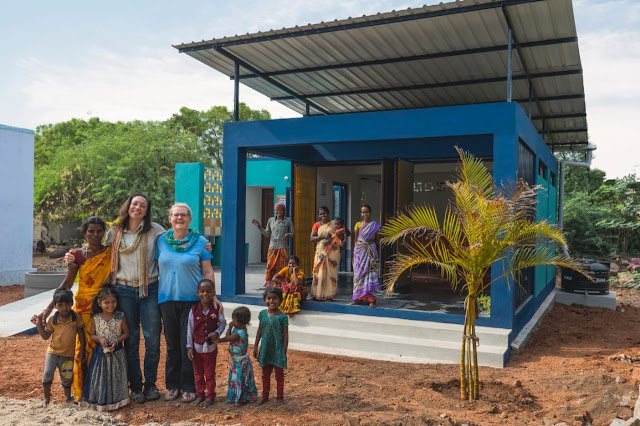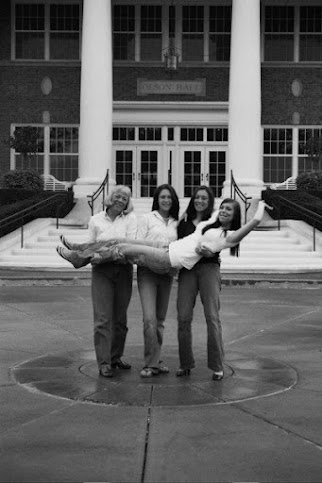The BHAG & International Women's Day NAWIC Scholarship Application
"Wonder rather than doubt is the root of all knowledge." - Abraham Joshua Heschel
Hi Readers, I have been MIA, sincere apologies for going truly AWOL....but I was being productive...
I applied for a scholarship to research something this week. The below Pecha Kucha talk from when I organised the Broome Pecha Kucha reminded me to just go for it (https://www.pechakucha.com/cities/broome/presentations/the-bhag)! I did. I am currently a finalist and awaiting outcome to be announced this afternoon. Am I scared - YES! Have I put forward a challenge that pushes my intellectual capabilities - YES! Can I do it if successful - YES! So, as I say all too often...BRING IT (on) MUTHAF#CKER! Below is my submission, because even if I am not successful I now have the ground work to keep pushing this mad scientist side of me that has been dormant since highschool! I loved science but it was not put forward as a career path for me as a young woman, so it was never considered....
Have a read, I'm open to interested parties contacting me to discuss further as I'm still developing my team, if successful or not!
“Think equal, build smart, innovate for change.”
As we are learning, women are the keystone to upward socio-economic mobility. The
majority of people live in slum-like and informal settlements around the world, thus the
majority of women live in these areas too. Because these settlements and slums are
informal and built by any and all available materials at hand, these women are women of
construction and should be seriously considered when we are looking at ways to advance
women in construction. We need to consider the concrete mixers, the water gatherers, the
diggers, and the assembly line workers that make up the construction work force in
developing countries, because they are women.
Having been on sabbatical in India for the past three months working as a volunteer
architect and project manager on behalf of The Anganwadi Project (a female run Australian
NGO based out of Sydney and doing work in Ahmadabad and Andre Pradesh, India),
watching the extreme inequality of women in construction in India has been at the forefront
of my mind – it directly resonates with the, “think equal paradigm.” I then very recently
attended the India Design and Architecture Symposium in New Delhi, on the12-15th of
February, 2019, and was privileged to hear a talk by James Law (Architecture Firm:
Cybertecture). He and his practice are at the absolute forefront of innovation in the built
environment. His innovations range from the simple reuse of concrete civil piping to
highspeed travel infrastructure in coordination with Elon Musk. What became strikingly evident
is that there is a hole or gap in industry. I asked him the question, “With one of our world’s
major problems being access to water, especially potable water but also clean and safe
water, is he or anyone working on architecture that creates its own water?” His response,
while not being what I intended, was that he felt guilty for not working on this and that it
was something extremely important.
I have walked away with the motivation to research and consider how architecture, like the
International Space Station, can produce its own water. There are many architects looking
at plant growth and urban gardens but they need water too! Since the symposium, my
initial research has not found anyone who is looking into the development of water
production machines/elements that are fully integrated and insitu to housing, commercial
office buildings, etc. It is particularly crucial for buildings to supply their own water and
potentially give back to the infrastructure grid in the same way that solar does. This
research and development gap is directly relevant for Australia in making it’s remote
communities more self-sufficient as well as it’s urban environments. Both pull much
needed water from the natural environment and also indirectly impact one of Australia’s
critical economies: agriculture.
My research proposal is to develop a functioning concept and model for a transportable
building unit that can create its own water. Indirectly, it will create and harness its own
energy to allow the water system and general power to function. We will investigate
building materials and water production technologies and design a prototype where water
production is intrinsic to the building envelope. It is currently the intent that we will focus on
the prototype being able to be installed in two types of environments in remote Australia:
arid and tropical. If we solve a prototype for these two climates we will have solved the
interstitial climates too.
I intend to work with one scientist, one specialist engineer, and one innovative builder. The
team is to be gender neutral or female dominant – but ideally 2 men and 2 women with
myself being the project manager and architect. Our Team is currently in development and
would be finalized upon award of scholarship.
How does this proposal tie back to women in construction focus of the scholarship? It is
anticipated that the prototype and system we design could be rolled out worldwide. It
would have the potential to bring much needed clean and potable water to populations
presently suffering from lack of this critical resource. It will need to be simple and easy to
maintain. It will need to function with the simplest of technologies. And if it does need to be
maintained it cannot cost a lot. So, if we are able to create a concept that is successful in
this way it can be easily implemented by governments and NGO’s across the world. This
also supports the, “build smart,” initiative of this scholarship. It will assist in bringing many
people clean water - which is considered a basic human right by UNESCO.
Women control and oversee the food and water distribution of almost all households
across the world, and in particular in developing countries. With this prototype it is
envisaged they can then more safely grow their own food and support their children and
the animals linked to their survival. It is said that with every woman you assist out of
poverty, six people come with her. Can you imagine the potential that one self producing
water unit could contribute to lifting women and their families out of poverty or generational
reliance on government subsidies?
I hope this proposal excites you as much as it does me. I know this will be perceived as an
overwhelming challenge, however, I am ready to ‘take it on,’ knowing I will be working in
concert with exceptional people throughout our industry and the problem solving that will
occur through intense collaboration and design thinking. I want to be a part of the amazing
team who leads and derives a plausible solution for the creation of water within the built
environment for Australia!
I will conclude with a few striking statistics to ponder:
- “EVERY 20 SECONDS, A CHILD DIES FROM A WATER-RELATED DISEASE. ABOUT 80% OF SEWAGE IN DEVELOPING COUNTRIES IS DISCHARGED UNTREATED.
- MORE PEOPLE HAVE CELL PHONES THAN ACCESS TO A DECENT TOILET. 3.6 MILLION PEOPLE DIE EACH YEAR FROM WATER-RELATED DISEASES.
- LESS THAN 1% OF THE WORLD’S FRESH WATER IS READILY ACCESSIBLE FOR DIRECT HUMAN USE.
- NEARLY 1 BILLION PEOPLE LACK ACCESS TO SAFE WATER.
- MILLIONS OF WOMEN AND CHILDREN SPEND SEVERAL HOURS A DAY COLLECTING WATER FROM DISTANT, OFTEN POLLUTED SOURCES.” (https://www.fastcompany.com/1760918/can-matt-damon-bring-clean-water-africa)



Comments
Post a Comment